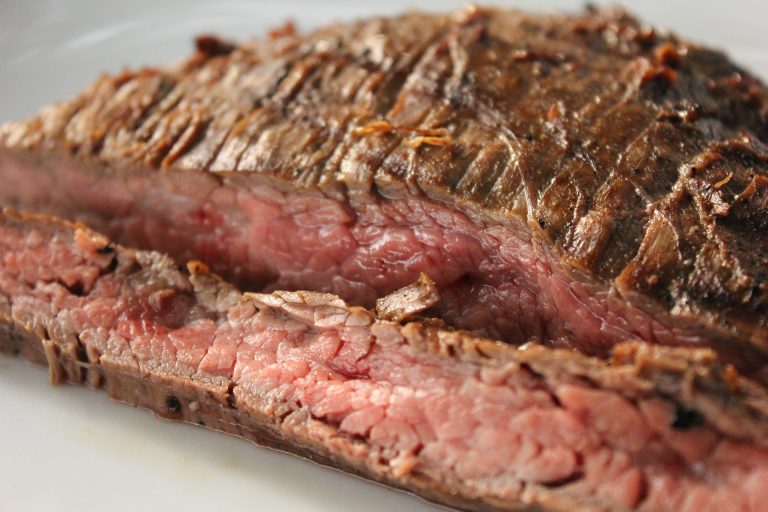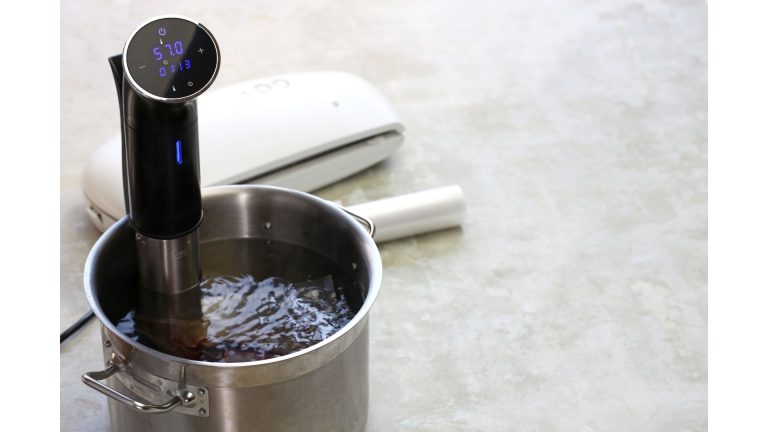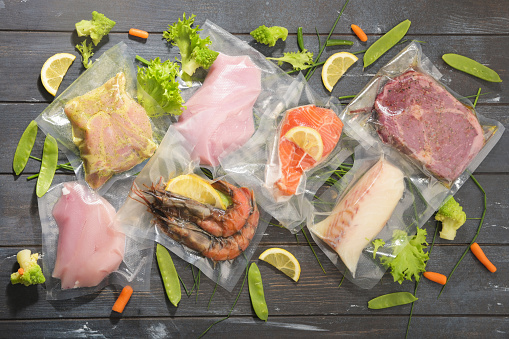How to Clean Sous Vide Bags?
In an era of new environmental awareness and more restrictions on single-use plastic, a lot of people are taking a second look at sous vide cooking.
People wonder if sous vide cooking is bad for the environment or if there is a way to reduce the use of plastic when using immersion cooking techniques since it has traditionally been done in vacuum-sealed or zip lock bags.
The most basic way to clean sous vide bags is to boil them for 10 minutes and then run cold water over them. After a few cycles, your bag will no longer look grimy.
Now let’s take a closer look at how to clean and reuse sous vide bags.
Table of Contents
Why Should I Consider Reusing Sous Vide Bags?
Single-use plastic bags, sealed with all air removed to keep water from mixing with the food in the bag, is what traditional sous-vide cooking calls for.
People who are reducing their plastic waste may be concerned about a cooking technique that requires so much plastic.
While we all need to do our part to reduce our use of plastic, it is also worth mentioning that sous vide cooking can cost less compared to other cooking methods and requires less energy.
So even with the use of plastic, it may be more eco-friendly than we think. Reducing and recycling sous vide bags will make them even more sustainable.
Are Sous Vide Bags Reusable?
Sous vide bag is a durable plastic bag that has been vacuum-sealed. This vacuum sealing makes them safe from leaks when storing food in them.
They are designed to be used and reused. In a study, the average life expectancy of a sous vide bag was 4.3 years.
When it’s time to replace your bags, they can be recycled at most stores.
You can reuse bags that have previously been used for fruits, vegetables, and sauces but do not reuse bags that have been used to hold raw meat, fish, and eggs.
That is the most straightforward answer, but there are a lot of other factors to consider:
Cooking temperature
Our most severe food-borne illnesses come from the bacterium associated with meat and eggs, but there are also instances where vegetables have carried unwanted bacteria as well.
It’s a good idea to cook food at a temperature of 140F (60C) or more to kill undesirable bacteria. The food needs to be kept at a temperature of 140F (60C) for several minutes.
It is important to check the FDA guidelines for your specific food to make sure you are cooking it safely.
Effective Cleaning
It is important to not just clean but sterilize the bags if you intend to reuse them. If you want to sterilize a plastic bag, you can wash it with soap and hot water and then make a solution of one part bleach to ten parts water.
Put the bag in the bleach solution and let it soak for 2 minutes, then empty and rinse the bag. Make sure that the sous vide equipment is not in contact with bleach.
The reuse methods make the bags safer, but they are not guaranteed to be free of pathogens.
It is not possible to guarantee that a process is safe or fool-proof because there are a lot of food-borne bacteria that favor different temperatures and environments and a wide variety of ways people cook and clean in their kitchens.
There are ways to reuse sous vide bags with less risk.
Purchase Reusable Bags
Silicone sous vide bags are designed to be cleaned and are sturdy enough to be used again without being at risk of breaking or leaking.
Many of these bags are dishwasher safe and can be used thousands of times. They are free of harmful chemicals, can be used in a freezer, and a microwave, and will last for a long time.
These bags can be used to replace single-use plastic when you use them.
Even the cleanest plastic bags will eventually become discolored or hold on to odors, so they will eventually need to be recycled or discarded, so they can’t be used indefinitely.
See also: Best Bags for Sous Vide
Creative Reuse
It is possible to reuse sous vide and other plastic bags but reuse them differently.
If you use a sealable plastic bag for baked goods for lunch a few times, then wash it in between, and use that same bag for meat only once, then discard or recycle it, that’s a good example.
Non-food single-use plastic bags, like those used for pet waste, could be replaced with sous vide bags that have meat or fish in them.
Methods for sterilizing your bags
Below are the methods to sterilize and reuse your sous vide bags.
Boiling Water
- Contact Time: 5-10 minutes
- Post Rinse: N/A
- Product Cost: ¢0.04 @ 1 lt / 34 oz
- Dilution Longevity: N/A
- Boiling or steam microwaving most LDPE and HDPE is not recommended!
- Their continued use temperature is 65°C / 149°F.
- Softening point is 90°C / 195°F.
- The melting point for LDPE is 110°C / 230°F.
Chlorine Bleach @ 1:10 dilution (64oz / 5 gallons)
- Contact Time: 2 minutes
- Post Rinse: Recommended with cold water
- Product Cost: $1.25 @ 1 lt / 34 oz
- Dilution Longevity: 24 hours or longer the higher the concentration.
- Alkaline cleaning agents such as bleach may burn your hands without proper protection and can also react to polycarbonate (PC) containers.
- While this doesn’t directly affect vacuum bags it may affect your sous vide container if exposed to it.
Star-San @ 1:640 dilution (1oz for 5 gallons)
- Contact Time: 1 minute
- Post Rinse: Not required
- Product Cost: $26 @ 1lt / 34 oz
- Dilution Longevity: Up to 6 months using distilled water or as long as PH is below 3.5
- Over time Star-San can react with nylon and weaken your bags if used on their exterior.
Iodophor @ 1:1280 dilution (0.5oz for 5 gallons)
- Contact Time: 1 minute
- Post Rinse: Not required
- Product Cost: $19 @ 1lt / 34 oz
- Dilution longevity: 24 hours
- Iodophor can leave an iodine odor behind and possibly stain your bags yellow.
FAQ
Can you use a mason jar for sous vide?
Yes! You can put your mason jars in a bath of hot water for up to 12 hours at 134 degrees. They are perfectly safe to store for any length of time and they will keep your food fresh and moist!
Can you wash sous vide bags in a dishwasher?
Yes, as long as they are clean, and you do not overfill the machine. Most people prefer to have a large enough dishwasher to handle one or more sous vide bags at once.
Conclusion
The best sous vide cooking calls for the use of plastic in a lot of cases. There are ways to reduce the impact on the environment.
You can reuse plastic bags when it is safe to do so, be creative with your reuse of plastic, and opt for more durable options, like Silicone bags or glass mason jars.
Sous vide cooking requires less energy than stovetop cooking so it’s a more sustainable cooking method.

Foodie and a passionate cook, I am here to share all of what I know about cooking, kitchen, and food prepping.
Follow me for delicious and healthy recipes.





![How to Sous Vide Veggie Burgers? [Quick Guide]](https://jikonitaste.com/wp-content/uploads/2022/02/veggie-burgers-768x432.jpg)
